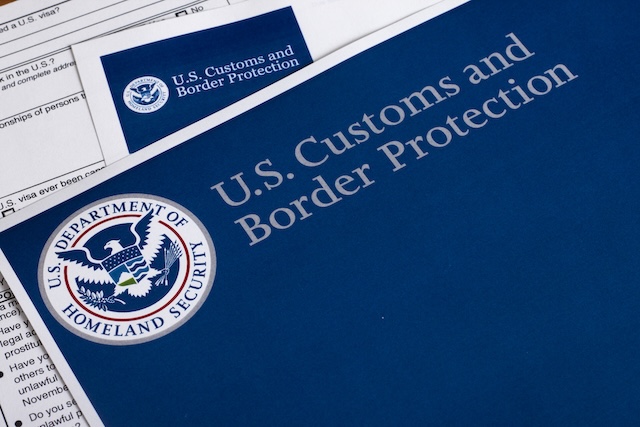- What are Drawback Privileges?
- Who Qualifies for Drawback Privileges?
- How to Prepare for a Privileges Application
- Managing Your Privilege Responsibilities
- The Strategic Advantage of Drawback Privileges
- Technology Requirements for Success
- Common Mistakes That Cost Privilege Status
- Key Takeaways
- Ready to Accelerate Your Drawback Recovery?
- Frequently Asked Questions
The tariff landscape has fundamentally shifted. With duty-free imports becoming increasingly rare, U.S. companies are now facing substantial duty costs on goods that previously entered without charges. The result? A massive surge in drawback claims as businesses scramble to recover these new expenses.
But here’s the problem: the U.S. Customs and Border Protection (CBP) agency, is overwhelmed. Application processing times have stretched from 3-6 months to nearly a year, and standard drawback claims are experiencing unprecedented delays.
In this environment, drawback privileges aren’t just a competitive advantage—they’re a financial lifeline. Companies with privilege status are recovering duties months faster than competitors stuck in the standard processing queue, creating a cash flow advantage that helps them maintain their competitive edge.
In this blog post, I’ll share a few tips for ensuring your privileges application doesn’t get slowed down at CBP.
What are Drawback Privileges?
Drawback privileges are accommodations granted by CBP that permit qualifying companies to fast-track duty recovery and simplify claim processing. This status is earned, not automatic, and recognizes organizations that consistently comply with regulations and demonstrate robust internal controls.
A privileges application is the formal request process that importers and exporters use to obtain special allowances from U.S. Customs and Border Protection (CBP), streamlining their duty drawback claims and enhancing compliance outcomes.
Think of privileges as CBP’s way of rewarding consistent, compliant companies with streamlined processing.
Who Qualifies for Drawback Privileges?
Not everyone qualifies for drawback privileges. CBP has strict requirements.
You must demonstrate:
- A history of compliance with drawback regulations
- Claims that meet accuracy requirements
- Robust internal control systems
CBP reviews your track record of accurate claims, proper documentation, and timely responses. Companies with frequent errors or incomplete submissions don’t qualify.
The application process reveals whether companies understand these requirements. Many submit incomplete applications, missing critical documentation.
How to Prepare for a Privileges Application
Successful privilege applications require systematic preparation and meticulous attention to detail. CBP reviews every aspect of your operation, so incomplete or rushed applications almost always fail.
Start with a documentation audit. Review your processes for tracking imports and exports. Ensure you have all the inventory documentation in place. If you plan on filing drawback on manufactured goods, also review your processes for tracking items into and out of production.
Broker cooperation with third parties. If you’re both the importer-of-record and the exporter-of-record, your privileges application and your drawback program itself becomes a lot easier. If you play only one of these roles and not the other, you’ll need to get cooperation from third parties.
- If you’re not the exporter-of-record, you’ll need to work with any of your customers who export those products to obtain documentation that tracks the imported goods out of the United States. You’ll also need to get a letter of endorsement from each customer who exports.
- If you’re not the importer-of-record, it’s best to work with a drawback provider who can broker cooperation with those who are paying the duties. Because the required documentation includes both the original value of the goods and the dollar amount of the duties, taxes, and fees paid by the importer, your drawback provider should have processes in place for safeguarding this sensitive information, such as non-disclosure agreements (NDAs). You or your broker will also have to obtain a transfer of drawback rights from each exporter you work with. This prevents two entities from staking a drawback claim on the same duty.
Prepare financial information. Show your organization’s stability and ability to handle accelerated payments. Using a drawback provider who has worked with CBP is often the easiest way to demonstrate that you’re well-positioned for accelerated payment.
Most importantly, demonstrate your understanding of privilege responsibilities. This isn’t just about faster payments; it’s about maintaining higher compliance standards.
Managing Your Privilege Responsibilities
Privilege status comes with ongoing obligations many companies underestimate.
You must maintain detailed records for all privileged claims. Regulations require documentation standards that exceed normal requirements.
CBP can conduct audits of privilege claims. Any compliance issues can result in immediate privilege suspension.
The Strategic Advantage of Drawback Privileges
When properly managed, drawback privileges deliver substantial competitive advantages beyond faster payments.
Operational efficiency increases significantly. Privileged claimants can predict recovery timing more accurately, enabling better financial planning.
Compliance tends to become more robust. Organizations that invest in a privileges application sometimes uncover processes that could use more structure, resulting in stronger internal controls around compliance.
Technology Requirements for Success
Privilege status demands higher documentation and reporting standards. Technology becomes essential for maintaining compliance.
Automated record-keeping systems prevent documentation gaps that can put privilege status at risk. Integrated platforms that track every aspect of drawback operations work best.
Artificial intelligence should be leveraged to achieve efficiencies of scale and ensure no duties are left on the table. Make sure your drawback provider has and continues to develop their AI-enabled solutions that meet the needs of this dynamic and complex trade environment.
Common Mistakes That Cost Privilege Status
The biggest mistake is treating privileges as an entitlement rather than an earned status. Companies that view privileges as automatic fail to maintain required compliance standards.
Documentation shortcuts represent another common failure. Privileged claimants must exceed standard requirements, not meet minimum standards.
Poor internal communication often derails applications. When different departments handle drawback operations without coordination, compliance gaps emerge. Having a third-party file claims on your behalf is a good way to reduce errors and achieve consistent, positive results that make the work worth the effort.
Key Takeaways
- Drawback privileges can reduce recovery time.
- Retaining a drawback provider can help you secure cooperation with third-party custodians of the documents required for drawback.
- Enhanced audit readiness is required to maintain status.
CITTA Brokerage can Transform Your Cash Flow with Expert Guidance
Privileges applications are complex and demanding, but CITTA Brokerage is here to simplify the entire process for you. Our drawback specialists provide comprehensive support every step of the way, ensuring qualified companies successfully obtain and maintain privilege status for faster recoveries.
Frequently Asked Questions
Under normal circumstances, the application process through the CBP can take around 3-6 months after submission of complete documentation. In the wake of ever-changing tariffs, it may take up to a year.
Yes, CBP can suspend privileges immediately for compliance violations or documentation failures.
CBP doesn’t specify minimum volumes but focuses on consistency and accuracy of claims over time.


